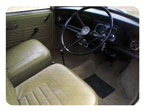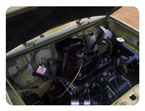Restoration of 1972 Mini Clubman Estate
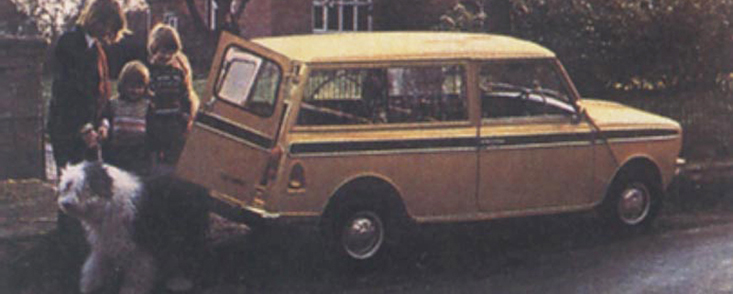
Article from Mini World Real Estate
This is the story of how Somerford Mini transformed a neglected Clubman Estate into ‘Nigel’ the beloved Mini World project car.
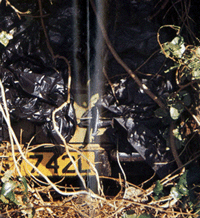
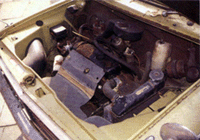
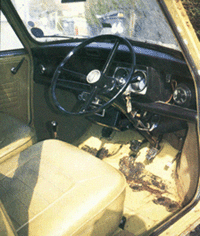
The MiniWorld 1994 Project Car really did need some serious work...
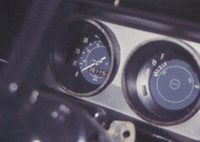
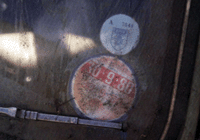


The story so far: After rescuing our Mini Estate from a hedge in deepest Bromley, we carefully dragged it onto the back of a low-loader and headed off to Somerford Mini Specialists to talk big time restorations. Well, after a few days, proprietor Pete Hines contacted us with a list of new parts needed and the time required to fit them. To be honest, it was no longer than we had first feared and the price he quoted us for all the work seemed pretty reasonable, so we gave Pete and his team the go-ahead to start work. Our original plan to rebuild the car with as much authenticity as possible was helped by the fact that virtually all the original parts were still on the car, albeit the worse for wear. Some of you will have seen the car at Brighton, where it formed part of the MiniWorld stand on the London-Brighton Run. To our surprise there was keen interest in what was basically a rusty shell and I remember walking towards the stand to find around five or six people peering inside the shell while Paddy’s Monte car and Bogus hardly got a look in! Indeed this unprecedented interest has been mirrored at Somerford, where it has already become something of a celebrity. “People are now coming down and asking to see the MiniWorld car!” explains Pete, who is yet to get to the stage of organising guided tours around the workshop.
So what’s been happening of late? Well, plenty, as I discover over a plate of egg and chips at Somerford’s local, things have run like clockwork.

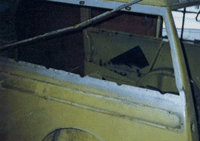
Stage 1
After delivery to Somerford, Pete and his team attempted something that Steve Bennett and myself thought was impossible – they tried to drive it! After draining the dirty fuel from the carb and cleaning up the original plugs and points, the car actually started! Not bad after 15 years of sitting in a hedge. Apart from providing a few minutes of entertainment, this experiment proved one very important thing – the engine was sound. The original budget for the restoration had not included a full engine rebuild, so this was very good news indeed.
After this the car was totally stripped down, with each and every component being carefully checked and catalogued to aid in the eventual rebuild. Once all the main ancillaries had been stripped from the engine, it too was removed from the shell.
After all the mechanicals and trim had been carefully taken from the car, Pete could then begin to assess the overall condition of the shell.
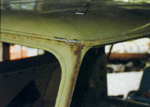
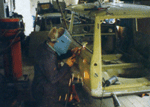
With the shell sitting on an old mattress to prevent causing any damage to the underside, Pete set about working out what could be salvaged or repaired from the original metal. Both front wings had seen better days and had rotted where most Minis do – at the join with the flitch panel. As wings for Minis are relatively inexpensive, the decision was made to bin the old ones and replace them with new examples. The main problem with rust in this area is that it tends to eat a hole in both the wing and the windscreen surround panel. This is less easy to replace and requires a little creative coachwork to fabricate a piece of fresh metal to replace the rusty piece. Rusty bits elsewhere were in surprisingly short supply. Charlie Holmes, one of Pete’s trusty colleagues, was genuinely surprised at how the floor pan had survived. Indeed with all the manky trim removed, large expanses of sound metal were clearly evident. Most importantly, the inner sills were in very good nick. Often with rebuilds such as ours, the floor needs to be cut right back into the footwells in order to reach sound metal. The inner and outer sills are then fabricated to form the door frame. As you can imagine, this is a very time consuming job, so our solid inner sills saved us a few quid without doubt.
The window gutters along the rear panels were less fortunate. Like most Estates, the gutters had somehow managed to cultivate a healthy crop of moss which hid much of the corrosion that was going on underneath. The rot found here was fairly extensive, and a good deal of bad metal had to be cut away in order to find the good stuff. According to Pete, these gutters tend to be a pig to fabricate, and having seen what was left after the old metal had been cut away, it’s not difficult to see why.
Few body restorations are ever straightforward, and ours was no exception. A full strip down usually shows up all previous repair jobs, all completed with varying degrees of competence. On our car, there was evidence of a front end shunt which had been repaired well, although the engine had been moved off its mountings as a result – a fault only discovered when the motor was removed!
More impact damage was discovered on both the back panels, although like the front end, they had been repaired professionally. Whether the damage to each side had been done in the same accident it was difficult to tell, but the inside of the panels bore signs that they had been pulled out after being dented. This didn’t prove to be a real problem, although the repair was surrounded by body-filler that needed to be sanded flat before painting.
Both the spare wheel well and battery box were in top condition and needed no repairs, although the bottom rear quarters and rear door step were fairly shot. Again, there was a degree of creative coachwork needed to fabricate a new piece of panel, but this was done so there was no visible join at all. The rear door step, according to Pete, was probably the toughest part of the job to contend with. “You see the panel goes down here, out here, down here, and out here!” he explains. Indeed precision is the order of the day when it comes to this particular panel on the Mini, as if one of the edges is slightly out, the rear doors don’t fit properly and water can get in.
Despite the repairs carried out, Pete was truly amazed at the condition of the shell in general. It seems that the bizarre combination of a large hedge and strips of black plastic sellotaped together had preserved much of the car in the 15 years it was laid-up.
Stage 3
While Pete set to work on repairing all the bodywork, his brother Phil had the unenviable task of cleaning every bit of trim that had been carefully extracted from the car. Thankfully, none of the seats had any tears or scratches in them, so it was just a case of a heavy duty clean-up. I don't know what kind of cleaner Phil used (presumably some kind of secret potion), but the seats and all the trim panels cleaned-up brilliantly. At one point when Phil was showing me the difference between the cleaned version and the dirty one, I half expected cheerful cockney Danny Baker to walk in with a box of Daz and a television camera!
Unfortunately, no amount of cleaning will change the colour, which gloriously complements the limeflower exterior. Virtually all the trim panels cleaned up perfectly, and all the original bits and pieces will be re-fitted to the car. The headlining was also in good condition, filthy dirty, but otherwise intact. The only real headache with the interior was the carpet, or lack of it. The previous owner had used the car as a work vehicle, and had presumably removed the carpet as he didn't want to get it dirty. This cunning plan certainly worked – the carpet did indeed stay clean, but unfortunately for us it stayed nowhere near the car when we bought it. Funnily enough, with all the Mini trim specialists about these days, Somerford have had a few problems obtaining the right colour replacements. It seems that nobody restores Limeflower Minis, hence there's little demand for the accompanying carpet. Undaunted at the time of writing, Pete was widening his search to a number of MG specialists, as Limeflower was a popular shade for a lot of 1970s MGs!
There was no radio in the car when we found it. Nor was there any evidence that there had ever been such an item, as the passenger parcel shelf was totally unmarked. We will have the option to put a period unit in it, but with the Estate, we're scuppered as to where any speakers could go (there's no rear parcel shelf!).
Stage 4
Another foul job entrusted to Phil was to clean all the gunge and muck from all the suspension, brake and steering assemblies. Again he was able to render these spotless after many hours of painstaking work. The end results were amazing, and I really thought that he was showing me new parts, the work is that good. The braking system required a certain degree of repair, as all the cylinders were shot, along with the pipes themselves. Replacing the entire pipe network was done with the help of Automec, who kindly supplied the pipes and fluid for the car. Naturally all the suspension rubbers have been replaced, along with all the bushes. Both clutch and brake master cylinders needed replacement, along with the clutch slave cylinder. The fuel tank, which on the Estate lies underneath the floor and with the rear subframe, was one of the few parts of the car that was exposed for its 15 year hibernation and still contained old fuel. Needless to say, the whole unit needed replacement, along with all the fuel pipes.
At the time of going to press, the MiniWorld project car is sitting at Somerford, awaiting a final rub down before the fully repaired shell is lifted into the spray room to be painted. We were faced with the choice of original cellulose paint or the harder wearing two-pack stuff. Although cellulose is usually chosen for a period restoration such as this, we’ve gone for two-pack as the car is going to be used as a day-to-day car once it’s finished.
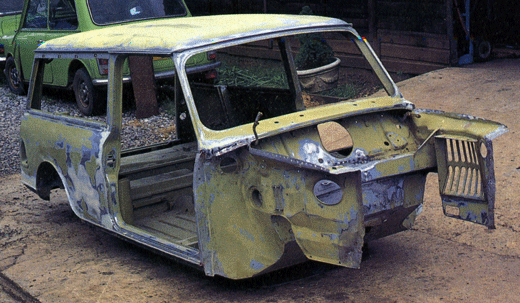
Real Estate Final Chapter
There is nothing quite like the anticipation of going to see a freshly restored project cr for the first time. Although we knew what to expect, myself and Editor Askew could hardly wait to get behind the wheel of MiniWorld’s spanking new (to all intents and purposes) Clubman Estate.
And we weren’t disappointed. As we arrived at Somerford Mini Centre, our snot green machine (sorry limeflower as BL called it back in the ‘70s) was nestling out of the rain in the warmth of the workshop. It looked as if we had entered some kind of lime-warp. Was this really 1994, or had we raced back to 1972? No we weren’t wearing tank tops and our trousers definitely weren’t ‘Lionels’, the workshop radio wasn’t bleating out Jimmy Osmond, but our Clubman looked as if it had just come out of the local BL showroom.
The boys from Somerford have done the business. Look at the before and after pictures and it’s hard to believe that this is the same car that we hauled from a bush-cum-garage, in Bromley. Indeed this is the first time that I had actually clapped eyes on the car since back in April, so the transformation was even more dramatic. Editor Askew has witnessed the gradual improvement, but even so was visibly moved at the sight of the magazines new baby!
Last month we looked at the work on the shell and ancillaries prior to painting. Once the paint was on (we went for two pack ‘cos its tough’), all that was left to do was put it back together again. With all the parts either refurbished to their original splendour, or replaced, this was fairly straightforward with no major dramas.
As you will have read last month, most of the car has been rebuilt with many of the original parts. Obviously anything that involved rubber had perished long ago, but generally its condition confirmed its genuine 36,000 miles, despite having not turned a wheel since 1980. Fourteen years is a long time to sit around doing nothing!
Miraculously, about the only thing that didn’t need major refurbishment (aside from a lick of paint) was the engine and gearbox. As Mike related last month, the engine actually started with a change of plugs and points and ran quite happily. I honestly thought that it would have seized solid, but obviously a thin coating of GTX did the job and kept the pistons ready for action. With regular servicing this motor should easily top 80,000 miles.
The best thing about our Clubman is its originality. It’s very unusual these days to find a car of this age that hasn’t been messed about with – speakers in the doors, spotlights, different steering wheel. One owner’s period accessories are another owner's fashion nightmare 20 years on. Fortunately, right down to the vinyl seats, our Clubman is totally original with only a factory option single Lucas spotlight on the front bumper. It’s never even had a stereo fitted!
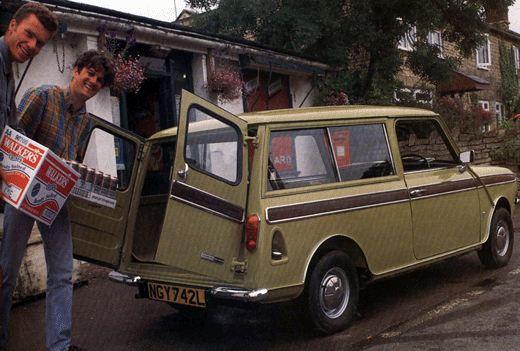
Of course we were absolutely busting to drive it, so after half an hour of drooling over it, and marvelling at the fact that is was just as shiny underneath, we cranked the Clubman over and disappeared to take some pictures. With a bit of choke it started first time which was naturally no surprise to the Somerford guys, but of immense satisfaction to us.
As driving experience goes this is pure unadulterated standard Mini, all 1000ccs of it. Perched on the slab-like seat with huge bus wheel in front, and a naff Clubman instrument pod, you almost wish the car had a radio because if you switched it on you would surely catch Tony Blackburn doing the Breakfast Show. Just to confirm the image, our ‘70s snot green Clubman was joined outside the Somerford village shop by an M-reg Escort E in a fetching shade of lime metallic green. Spooky.
So it’s all very Mini and all the better for it. The 1000cc motor is perfectly sprightly and typically throttle responsive. The ride is rubber cone jittery, but with a slightly longer wheelbase (4in to be exact for all you anoraks) it is more stable than a standard Mini saloon. Of course it steers with Mini precision and remarkably, the drum brakes pull it up with reassuring bite. In short it feels like a new car and really that’s what it is.
Now we would be the first to admit that as far as Minis go, the Clubman Estate is hardly at the top of the classic list, but that, to us, is where its charm lies. It is a fabulous chunk of ‘70s naff. Right down to the awful colour (it could be worse, it could have been one of those dire shades of baby-crap brown) and the fablon wood effect stripes. It is from an era that taste completely bypassed, when people were seriously into man-made fibres and ate a lot of Spangles. No it will never have the kudos of an early Cooper or a Mk1, and a lot of you probably can’t understand the motivation for such a restoration, but we don’t care ‘cos our Clubman is part of the MiniWorld fleet and we love it.

